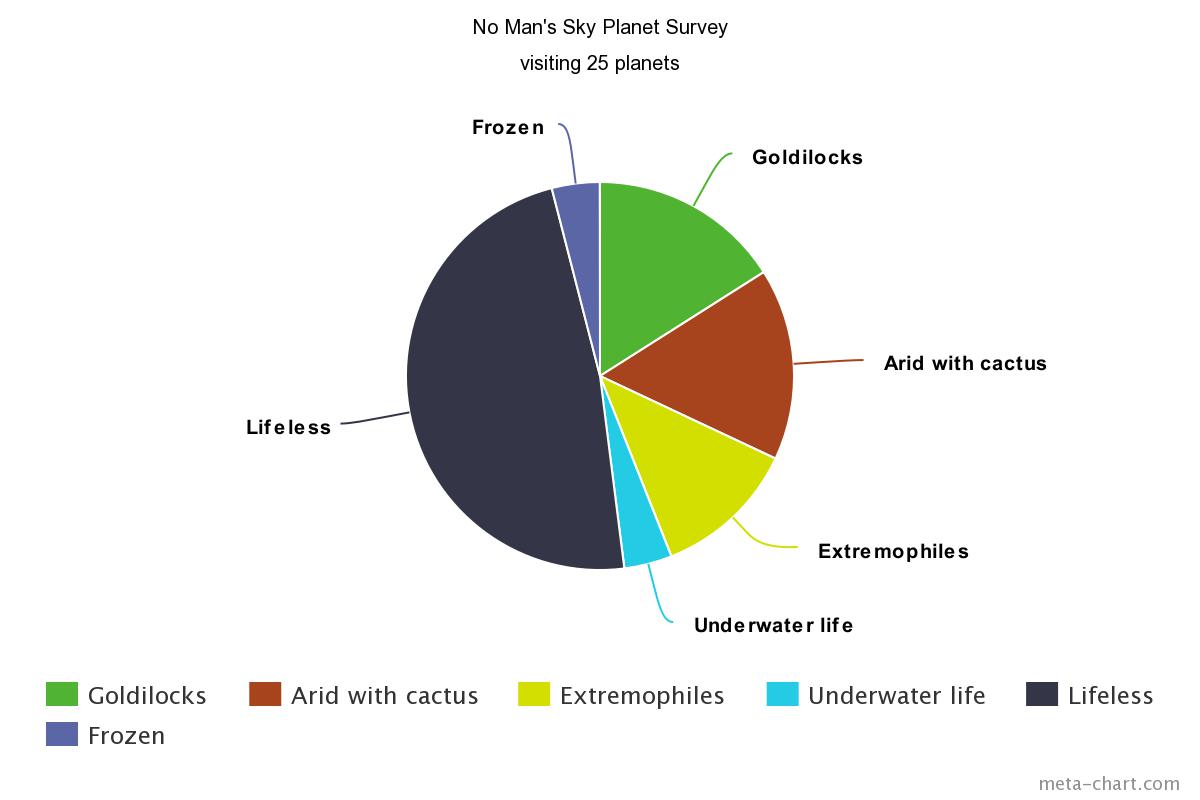As of January 16th, I have made good progress on my home base on planet Neochadwickia. I have hired four co-workers (an engineer, a scientist, a weapons specialist and an agricultural expert) and have set up their work areas. I made a large utility room for storage of resources. It holds 10 vaults. There is even a deck area on top of the utility room, with an outdoor table and chairs. Here my coworkers and I can relax, watch the beautiful sunsets, and enjoy observing the behavior of the local tyrannosauroids. I can remember being terrified of these creatures and even worried that they were a reason to avoid setting up base on this beautiful “Goldilocks” planet. However, now that I understand how to avoid them, I actually enjoy watching them. It’s like watching birds at a bird feeder, except that the birds are 12 feet tall and carnivorous.
Now that my co-workers are settled in, they would like me to run some errands for them — contact some people, hunt down various rare materials — but I have been feeling restless. I want to see the variety of planets out there. Also, I am in search of several things. One is a “water world” — one whose surface is nearly covered with water — one which is not boiling hot, radioactive, or overrun with swarms of Sentinels! A second goal is to find the creature I call the Noagervay. I saw these awesomely bizarre creatures, like a cross between a giant toucan and a pterosaur, in a video by fellow traveler Noah Caldwell-Gervais. I have seen some species of tiny ones, but would dearly love to see the giants with my own eyes. I wonder if finding them will mean my wandering days will be over.
In this restless mood, I made a rapid tour of six star systems, including a total of 25 planets. In many cases I did little more than land, step out of my starship, take a few photos, and move on. This was especially the case for those planets where the Sentinels attacked within minutes of my arrival. Because I want to avoid being marked by the Sentinels as a troublemaker, I (almost) always run away rather than fight back.
The star systems and planets in the known galaxy have already been assigned names by the galaxy database. We are encouraged to rename them in our own language. In my case I have mainly been referring to them by shortened versions of their database names.
SYSTEM ITARA
Hatsu (Jungle) — dark (nearly black) “grass”, broadleaved trees, hills with bare stone ridges
Dagweg (Parched) — cactus-like plants of many types
SYSTEM NUTI
Leworka (Forsaken) — aggressive Sentinels
Elebar (Fiery) — extreme heat, stormy
Eclea (Empty) — ground a deep emerald green, clear skies
Nital (Dead) — land seems lifeless, but bodies of water with “invertebrates”
Ochi (Tropical) — prairie with golden grass and some blue trees
Igu (Radioactive) — ominous magenta land and sky, giant “turtles” and “deer”
SYSTEM RED NOYA
Yilwi (Poisonous) — purple coloration to land and sky
SYSTEM ZURUMAN
Teyvka (Empty) — bright red soil; clear skies give views of planetary conjunctions
Letaiz (Contaminated) — hostile Sentinels prevented me from observing the amazing giant species
Ryov (Parched) — cactus-like plants, similar to American southwest
Usheq (Barren moon) — clear sky, awesome view of gigantic planet below
Havaru (Toxic moon) — aggressive Sentinels, greenish sky, giant “mushrooms”
SYSTEM MIPLUN
Raziti (Frozen) — varied animal life including feather-armed tyrannosaurs
Danken (Parched) — aggressive Sentinels, austere but beautiful views
Rogo (Empty) — austere but beautiful views
Ozlovos (Dead) — austere but beautiful views
Ruzho (Hot) — bizarre “plant” life, some of which moved. Possibly intelligent lifeforms?
SYSTEM INUYA
Space Anomaly — met with 2 fellow travelers
New Entrod (Irradiated) — Sentinels “frenzied”. Extreme nuclear decay. Huge animals, 20′ tall
SYSTEM LAUSLO
Yichyao (Forsaken) — Sentinels threatening; reddish hills
Uomur (Noxious) — hostile Sentinels, harmful rain, awe-inspiring views of giant lichen
Susato (Viridescent) — grassland with some larger plants; giant land starfish
Kinen (Barren) — very bright reddish soil, pinkish sky
Tuluk (Paradise) — “Goldilocks” planet covered with beautiful amber grass and dark purple trees
Summary —
12 “lifeless” planets — some with radiation, intolerable heat, or aggressive Sentinels
1 planet with barren surface but underwater lifeforms
3 radioactive planets, all with extreme lifeforms including giant animals
1 frozen planet — including varied plant and animal life
4 desert-like planets with drought-tolerant plants; in one case the plants could move
4 “Goldilocks” planets with abundant grassland, trees, and mild weather

